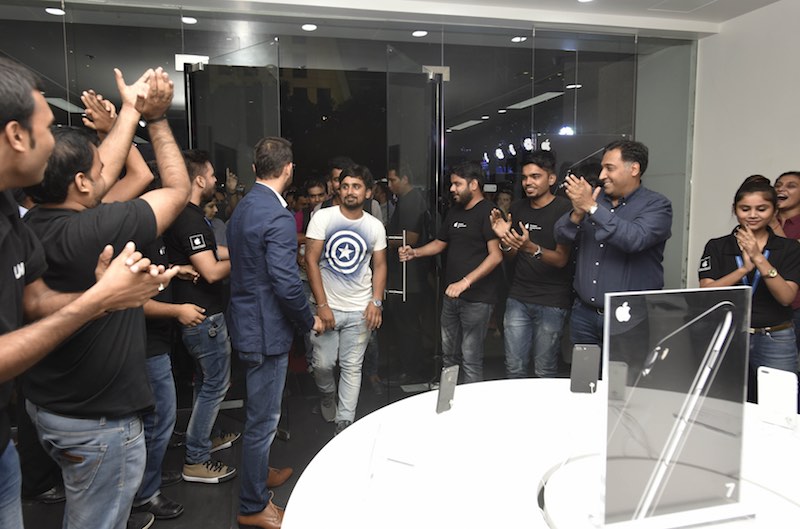If anyone is interested to know how the 7 performs compared to the 6 and 6s
Camera is a little better and you notice it for sure. It is a lot better in low lights conditions.
SPEED, I was using a 6s and I notice a much snappier Safari and iMessage screens. Part of it may be IOS 10 but pages pop really fast. It is way way faster than the original 6.
Black looks awesome!!! But is is so slick. There are no lines and it looks like a solid 1 piece product. I saw the Glossy Jet Black and it is a work of art but it show fine scratches. So most people will use a case which hides the back anyway so maybe color is not that important. Mainly if you want a white front or black.
I love the new home button, took about 5 minutes to get use to and I don't miss the old home button at all.
Any case with a large camera cutout like the CM4 wallet case works with the 7. But most likely all other will not. Some of mine I can cut out around the old camera hole and use it until new cases come out. But I promise you this phone is slippery when dry!!
Overall I love it! Fastest device that I have ever used. I can out type the 6s sometimes on reviews but thiamine keep up no problem.
128g is perfect in size for most everyone. Hardcore photo and video people may want the 256g.
No headphone jack, doesn't bother me at all. The adapter sounds fine with my expensive headphones. It's not really that large either. The lightning headphones sound really good to me. I tested the same song with the same headphone using a 6s and the 7 with the adapter and I cannot tell the difference. In some ways the 7 with the adpater sounded cleaner and had a little less aliasing hiss from the analog to digital conversion process. So beside have a little while cable sticking out I think the 7 audio is fine.
IPhone 4,5, 5s, SE and 6 users will feel a huge speed increase. The 6s is not far off speed wise but it is noticeable to me.
No matter how you split up the payment or go with a upgrade contract price, you'll pay full price for any of the phones. It is all just creative math by the vendors. I bought mine outright and got point on my credit card, enough to reduce my price by $25.00. I also heard the Black and Jet Blacks maybe high in demand.
Hope this helps :)
By
Jamie @ R3
- 5:10:00 PM
- 1 Comments





























